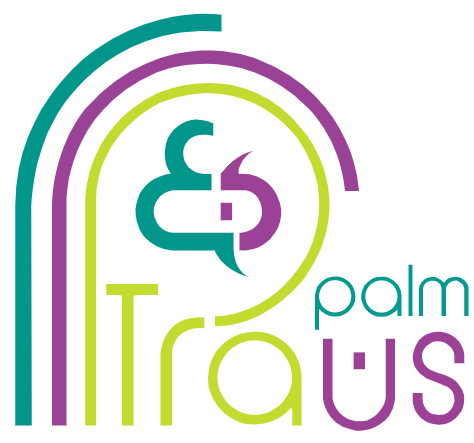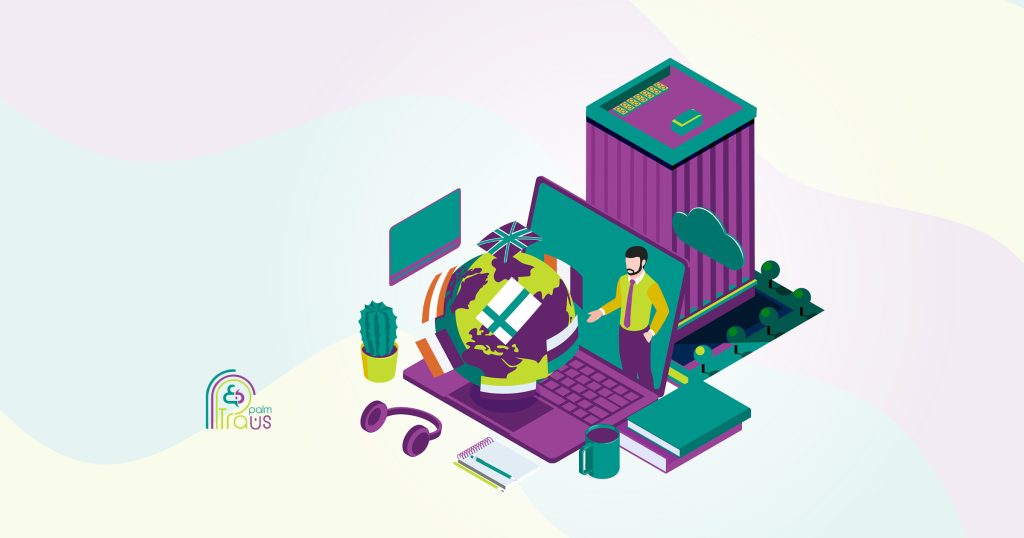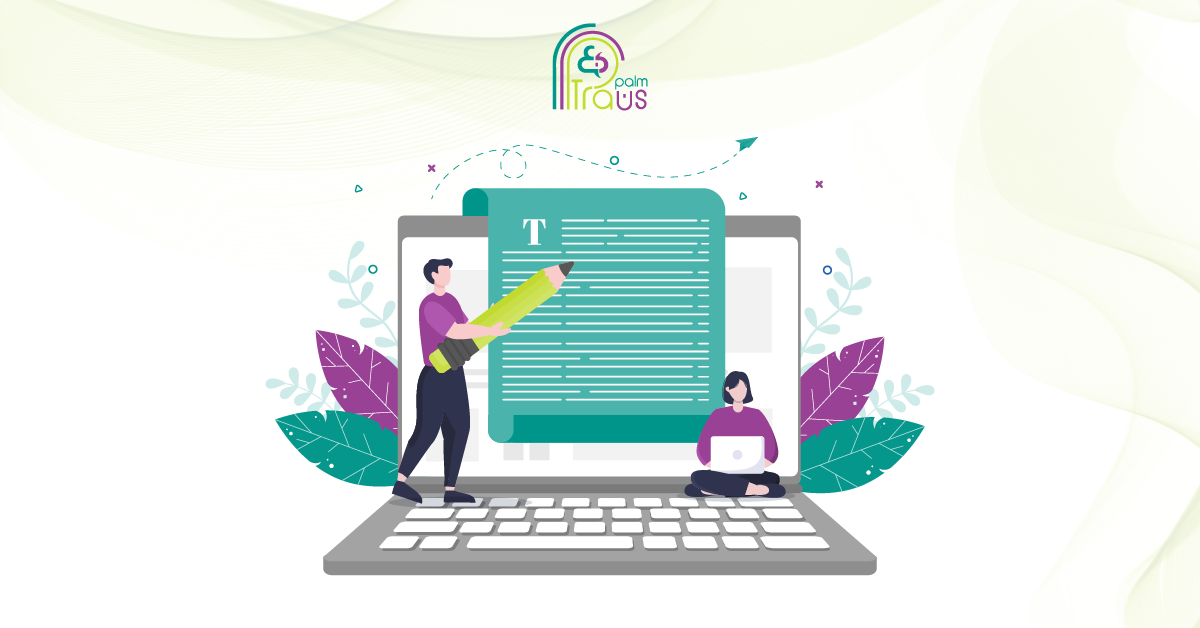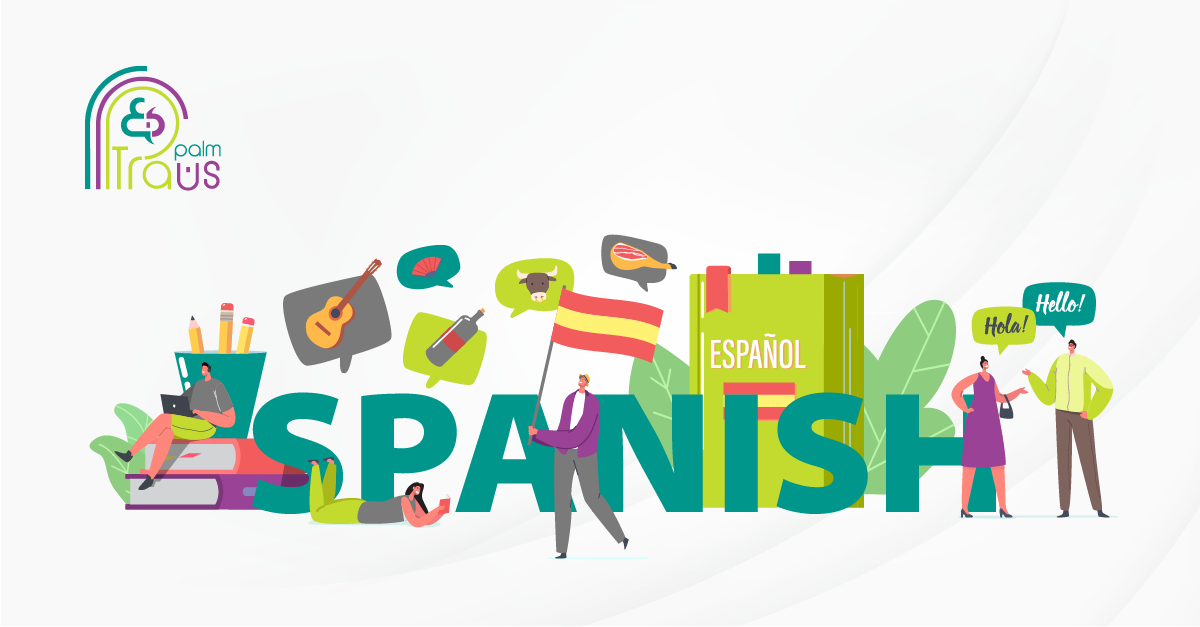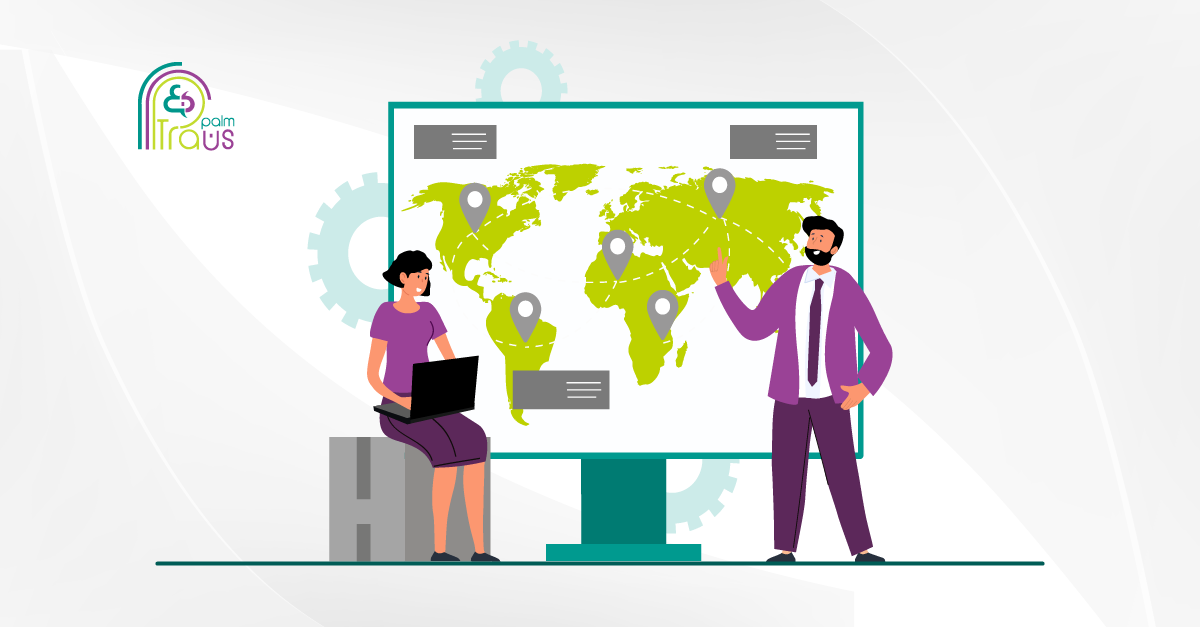In the past, professional translators used to encounter several challenges when working manually on a translation project. These hustles could include understanding cultural context, ensuring consistency across multiple content, balancing productivity speed, and quality, and handling industry-specific content with its unique terminology.
Today, however, translation tools—especially CAT (Computer-Assisted Translation) tools—have revolutionized the field, streamlining workflows and enhancing efficiency in ways that were previously unimaginable.
In this blog post, we will explain what CAT tools are and explore their evolution from inception to their modern-day form. We will also discuss the topic from various aspects, covering their unique features and how to choose the right CAT software for your business.
What Are CAT Tools?
They are computer-assisted translation software that speeds up the translation process of a text from one language into another, supported with powerful features to maintain consistency and streamline operations. Throughout the ages, human translators were the only bridge to overcome language gaps and promote mutual understanding among different nations. The process was daunting, labor-intensive, and time-consuming for translators. With the invention of computers, the market witnessed a transformative change in the translation process. The first CAT tools have been around since the 1950s and have begun as standalone software that can be used in one computer. They evolved then to allow companies to share and access the tools on multiple computers. Today’s CAT tools are cloud-based and can be accessed anywhere, anytime, with exceptional capabilities.Top Features of Computer-Assisted Translation Software for A Streamlined Workflow
You might notice a wide range of computer-assisted translation software in the marketplace. Each has its distinctive set of features. However, CAT tools generally share some standard functionalities. Here are five prominent features you should consider:1-Translation Memory (TM)
With CAT tools, you no longer have to translate the same content from scratch in every new project. Translation memory records previously translated segment phrases to reuse in future translation projects. Translators can use the TM function to suggest identical translations stored in a database to match the new text segments. It is important to recognize that there are different types of translation memory matches, which are the following:- Fuzzy match: The source text segment is slightly different from the TM.
- Context match: The translation matches the text segment and context in TM.
- Full match: The source text segment is similar to the TM.
2-Term bases
Term bases, also known as glossaries or dictionaries, are pre-established databases containing approved definitions and terminologies, used in specific translation and localization projects, Terminology management helps you maintain brand accuracy by allowing consistent usage of common terminology across multiple translation works, relevant to your industry.3-Machine Translation (MT) Integration
CAT tools can integrate with other software. Machine translation engines, for example, provide automated translation suggestions to increase productivity and save time and money, particularly when you deal with a large volume of translation work, However, this does not imply replacing human translators. The involvement of a human in proofreading and post-editing tasks is a must for accuracy and quality assurance.4-Quality Assurance (QA)
Computer-assisted translation tools include built-in quality assurance checks. It performs as a text editing feature that captures grammar mistakes, spelling errors, missing translations, and redundant terms to ensure high-quality translation and consistency.5-File Formatting Support
Converting a project to different file formats can be annoying for many translators due to the potential risk of file layout corruption, Fortunately, CAT tools accept various file formats, such as spreadsheets, presentation files, web formats, text documents, and more, You don’t have to edit single diagrams or text boxes every time in your translation project. Therefore, translators can deliver translation without bothering about file compatibility.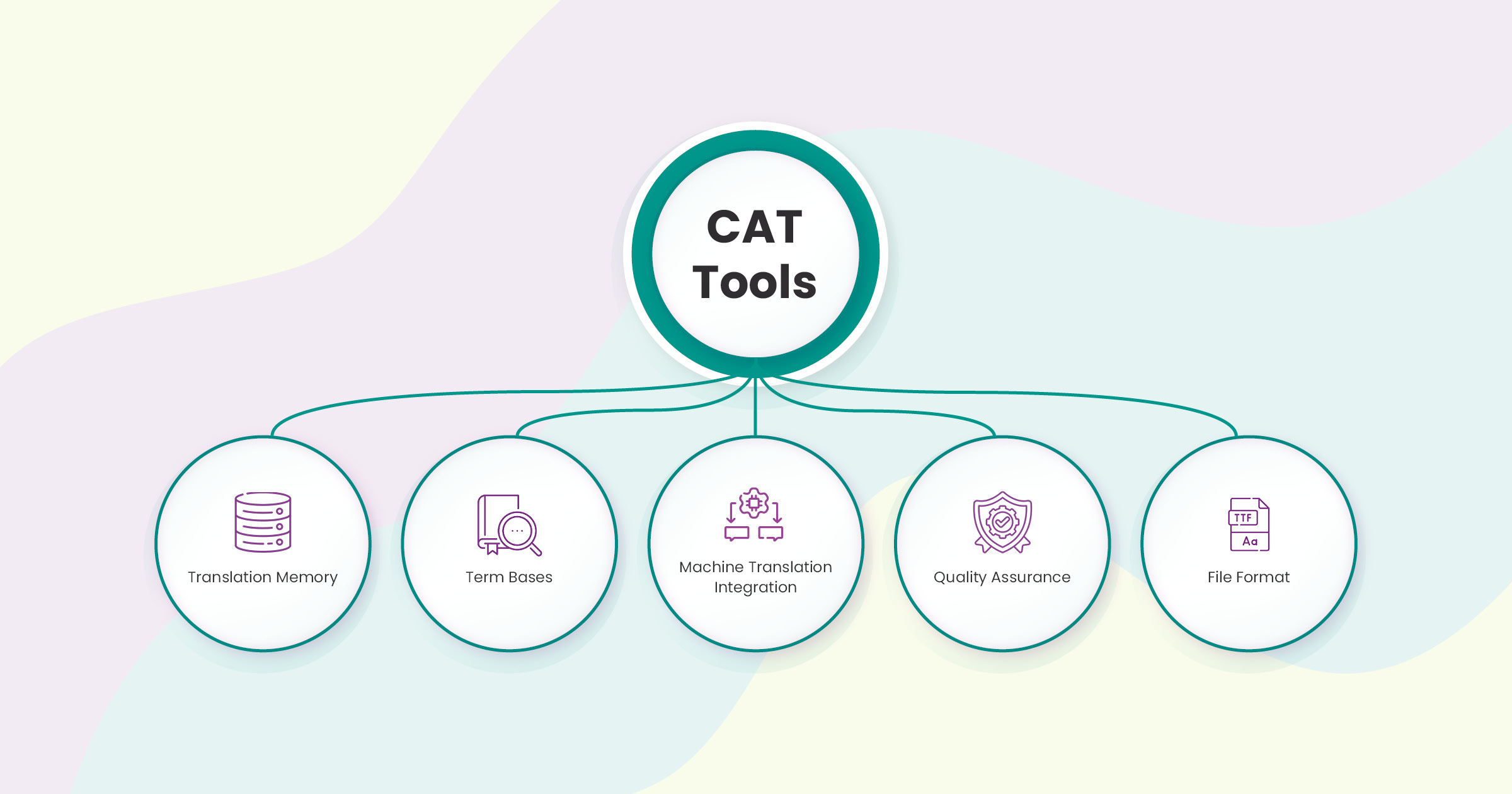
Insights on CAT Tools
To understand the influence of computer-assisted translation tools on the efficiency of translation project workflows, check the following real-world perspectives and statistics showing how these tools enhance individual productivity.- A survey conducted by ProZ has found that about 88% of full-time professional translators use at least one CAT tool, while 76% use more than one computer-assisted translation tool.
- According to information collected by Proz, over 50% of translators said that when they work together with their agency clients, most of them require them to utilize a certain CAT tool.
- In a different study, carried out by De Gruyter, 70% of translators stated that translation software is useful to their work, with the main benefit being improving productivity.
- The usage of translation software has allowed companies to minimize the time spent on localization processes by 40%.
- According to an Indonesian translator, CAT tools increase his productivity, stated “with the increasingly improved quality of automatic translation, the CATs greatly accelerate my ability to find the right equivalent in the target language” and he also adds “Without CATs, I could translate an average of 2,500 words per day. With them, I translate 2,500 words in just half a day”.
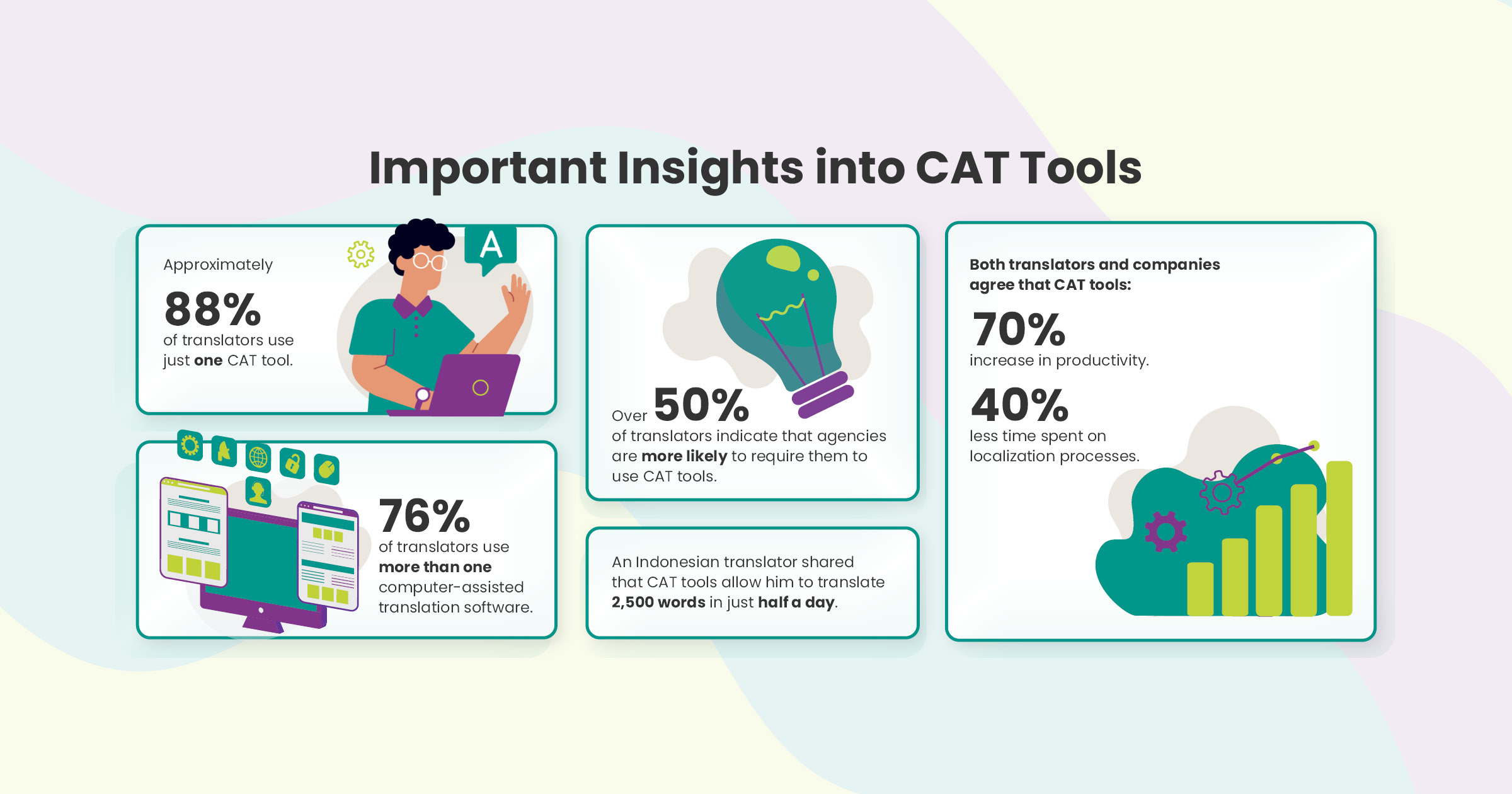 Now, you may be wondering which CAT tools translators use most frequently. ProZ surveyed over 3,000 translators worldwide to determine the most commonly used CAT tool, and the following graph illustrates the findings:
Now, you may be wondering which CAT tools translators use most frequently. ProZ surveyed over 3,000 translators worldwide to determine the most commonly used CAT tool, and the following graph illustrates the findings:
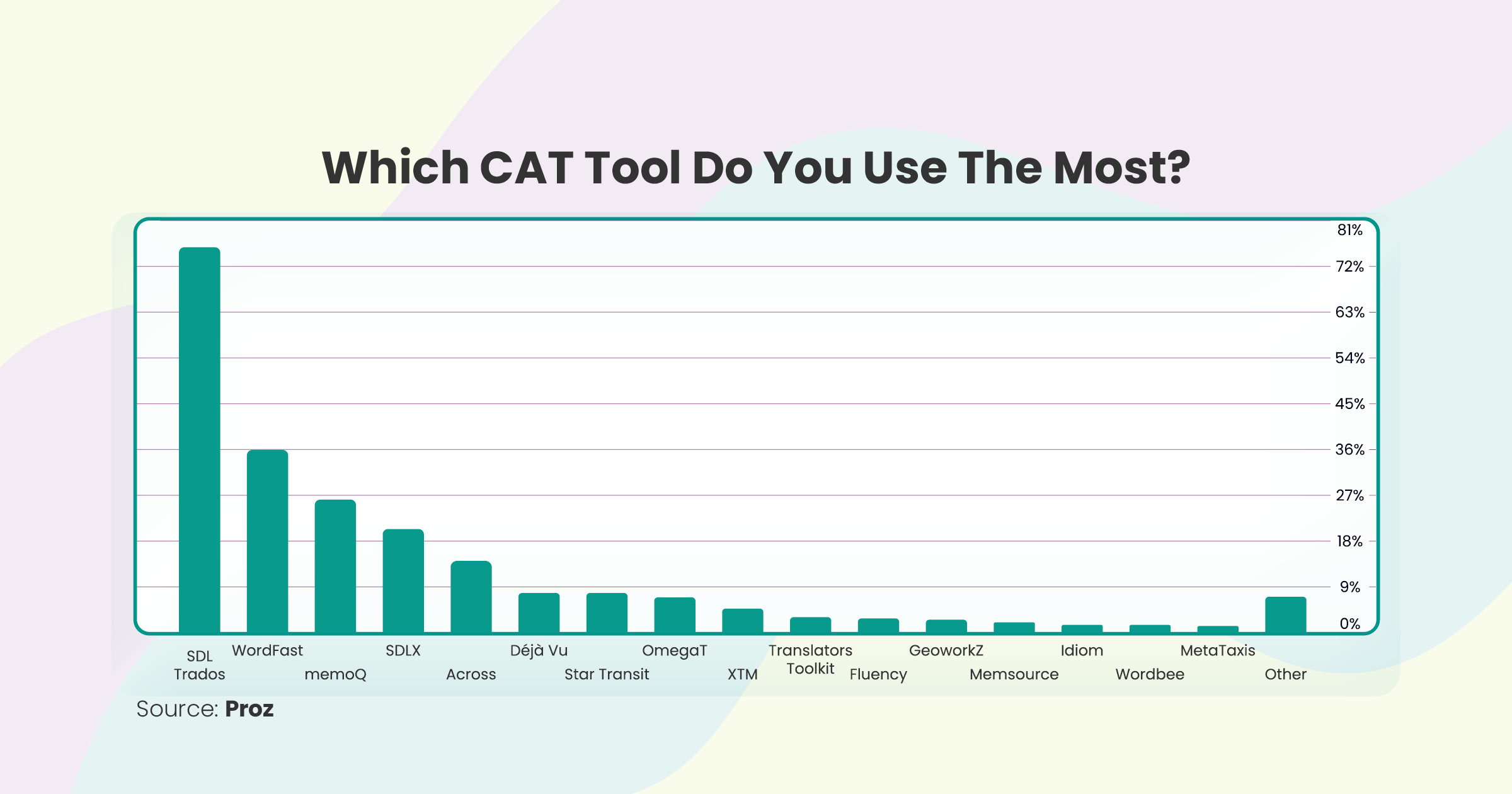 The above graph shows that SDL Trados is the most used Computer-Assisted Translation (CAT) program, as over 72% of the respondents chose SDL Trados as their first choice. Wordfast came in second place with 36% of translators using it. MemoQ took the third position with slightly under 27% of respondents using it, while more than 18% of translators use SDLX. More than 9% of respondents use Across, while Déjà Vu is much less common, with fewer than 9% of surveyed translators reporting its usage.
The above graph shows that SDL Trados is the most used Computer-Assisted Translation (CAT) program, as over 72% of the respondents chose SDL Trados as their first choice. Wordfast came in second place with 36% of translators using it. MemoQ took the third position with slightly under 27% of respondents using it, while more than 18% of translators use SDLX. More than 9% of respondents use Across, while Déjà Vu is much less common, with fewer than 9% of surveyed translators reporting its usage.
Finding The Perfect Fit: Factors to Consider When Selecting A CAT Tool
The CAT software market is experiencing continuous growth. It could be overwhelming for translators and translation agencies to choose the right tool with so many options available in the market. However, it is not impossible. Generally, there is no perfect choice, and your decision depends on different factors. In other words, your selection involves evaluating security measures, essential features, pricing models, integration capabilities, file format support, and user interface to find the one that best suits your business needs. Here are the main things you need to consider when selecting the proper CAT tool for your organization: 1. You don’t need all the extra features. Look for CAT tools that include essential functionalities that are important for your needs, such as translation memory, term bases, integrated machine translation, quality assurance tools, project management capabilities, and file format support. 2. User experience matters, so choose a tool with a user-friendly interface to navigate without any complexities and reduce the learning curve for your team. 3. Confirm that your tool can handle various file formats and support all the languages you work with. 4. Check if your CAT tool integrates well with other software, such as machine translation, project management systems, or other relevant platforms when needed for your translation work. 5. Some tools need subscriptions, while others offer perpetual licenses. Therefore, choose the cost-effectiveness tool that fits your needs and budget. 6. Security compliance is important, particularly for sensitive content. Thus, ensure that your tool meets your security and data privacy requirements.Manage Your Multilingual Communication with TransPalm
Our team of translators is ready to deliver the best quality translations for your projects, with strong expertise in more than 120 languages and cultural nuances. TransPalm offers high-quality language services including translation, localization, transcription, desktop publishing, interpretation, machine translation, subtitling, post-editing, and international SEO, with over 10 years of experience, at reasonable rates. We are an ISO 9001 and ISO 17100 certified translation agency. It upholds the highest levels of integrity and quality, enabling us to assist companies and organizations all around the world. We are a top provider of translation services, specializing in all languages of Central and Eastern Europe (CEE) as well as the main languages of Asia and Central Asia. We provide technologically advanced multilingual solutions wherever and whenever our clients require them. For more information, get in touch with us NOW to receive your quotation!Discuss Your Project with Our Experts.
